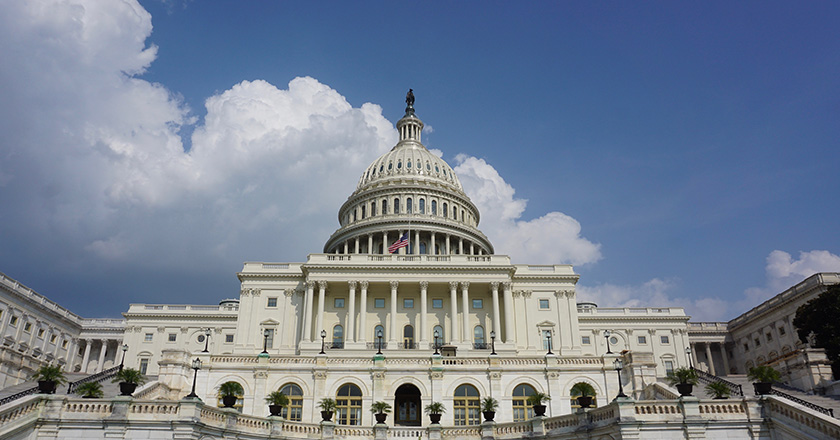A year into the COVID-19 pandemic, the hardship of the crisis on people, businesses, and organizations across the world is clear.
On March 11, 2021, the US Government enacted the American Rescue Plan Act (the ARPA), a relief bill designed to provide economic relief to American citizens, local and state governments, and businesses.
While the bill doesn’t spell how citizens must spend their stimulus funds, it does provide strict guidelines for the local and state governments receiving benefits from the bill. These spending guidelines are meant to push local and state governments to put the funds back into their community, either directly or through the purchase of tools that make servicing their respective communities simpler and more efficient.
These rules force local and state governments to ask what can qualify as a valid use of the funds, and how their agencies can draw the most value from the stimulus.
ARPA for Government Explained
The pandemic has been very trying on many people, businesses, and organizations; many of the recipients of the funds this bill grants truly need the assistance.
The American Rescue Plan Act details exactly how the $1.9 trillion dollar package is meant to be distributed between all of its recipients. Lawmakers designated $154.7 billion dollars of the $1.9 trillion sum for US territories and local and tribal governments, accompanied by legal allowances for spending those funds. Specifically, the legislation provides the following:
- $4.5 billion for US territories.
- $20 billion for tribal governments.
- $65.1 billion to counties.
- $45.6 billion to metropolitan cities.
- $19.5 billion to municipalities.
Much like its 2020 predecessor, the CARES Act, the ARPA also qualifies that the funds the federal government delivers to states, counties, and municipalities through this legislation must be spent on specific items or services to promote economic and disaster recovery.
The ARPA distributes its relief to State Fiscal Recovery Funds and Local Fiscal Recovery Funds. Any of the money from either of these sources must be spent according to the following guidelines:
- Respond to the COVID-19 emergency and address its economic effects, including through aid to households, small businesses, nonprofits, and industries such as tourism and hospitality.
- Provide premium pay to essential employees or grants to their employers.
- Provide government services affected by a revenue reduction resulting from COVID-19.
- Make investments in water, sewer and broadband infrastructure.
The legislation also specifies that the local and state governments, cities, and municipalities will receive funds in two batches, with the second batch coming no earlier than a year after the first batch. Overall, state and local governments that receive relief funds via the ARPA must spend those funds by December 31st, 2024.
Spending ARPA Funds
The relief funds from the ARPA come with strings, much like the CARES Act did (though ARPA comes with much more slack). If recipients of the ARPA funds don’t spend those dollars by December 31, 2024, the federal government reclaims the money. This condition should push local and state governments to spend the money, even if finding a valid expense takes some searching.
Most of the restrictions on local and state government spending don’t allow for much interpretation. The first qualifying statement is an exception, legitimizing expenses made in response to the pandemic. It’s a very broad qualifying condition, and the shape of the items under this umbrella can vary drastically between twins, cities, counties, and states and the nature of their disaster responses.
The COVID-19 pandemic, being the extended public emergency it is, has exposed many of the holes in the systems and plans many agencies use to respond to incidents. Agencies across the country, as long as they receive funds through the ARPA, can use the incoming funds to patch the shortcomings of their programs the COVID-19 pandemic made apparent.
It’ll be easy for agencies to shore up their program’s with the most immediately accessible solutions. But agency directors and decision-makers should realize that the ARPA funds can be invested, allowing teams to not only improve their pandemic responses, but their programs as a whole.
Investing ARPA Funds
Say a team found their EOC and processes were insufficient for remote settings over the course of their pandemic response. Remedying this would be a good use of ARPA funds, as it immediately aids their pandemic response.
This situation, and many other corrective actions, are opportunities for emergency management teams to draw a lot of value from ARPA funds. If a team runs into an operational gap once, there’s a chance it comes around again. While the COVID-19 pandemic is a once-in-a-century event, it still demands the same core emergency functions from a team and will expose holes in a response that are worth patching for the future.
The example above is just one situation in which emergency managers can start to maximize the use of the ARPA funds their EOCs receive. Ideally, emergency managers should look for solutions that not only address an identified gap, but one that covers multiple gaps, or even just has nice added value through unique functionalities.
A lot of tools can accommodate multiple common EOC functions and make the processes more efficient. Often, platforms can facilitate communication and coordination between team members (especially in remote settings), streamline data intake, store data in specialized and tailored formats, and curate information and wrap in all or specific stakeholders when appropriate.
The assistance this legislation provides could give emergency managers and their EOCs the chance to improve their operations for the long term. These funds give practitioners and their departments an unusual boost, and will help secure tools a typical year’s budget can’t take on.
Building Resilient Communities
A helping hand always plays a critical role in getting out of a crisis. Luckily, for local and state governments, citizens, and businesses, the American Rescue Plan Act provides at least some of the relief that every party needs.
For local and state governments, the funds coming from the federal government will allow them to make improvements to their emergency management departments for both immediate and future gains. By bolstering pandemic response using ARPA funds, local and state governments can also insure their future through smart investments in solutions.








